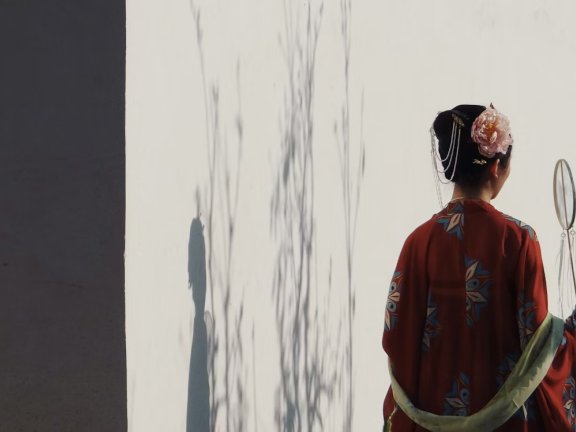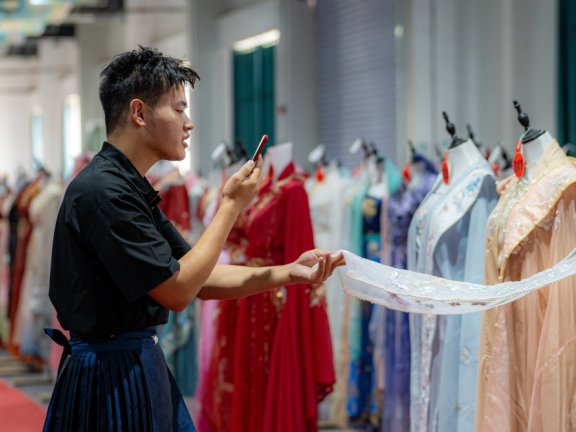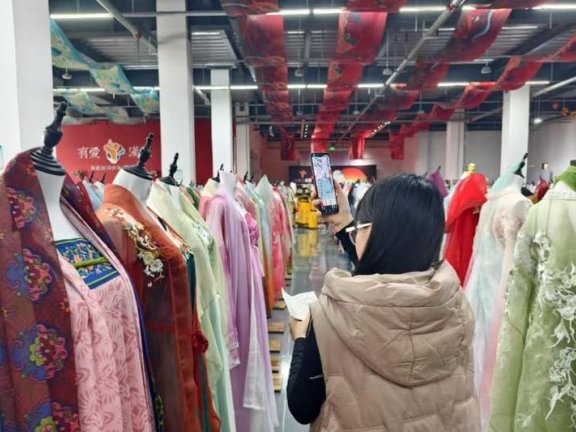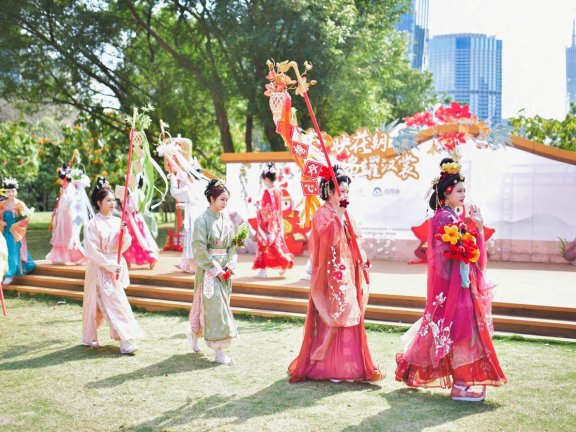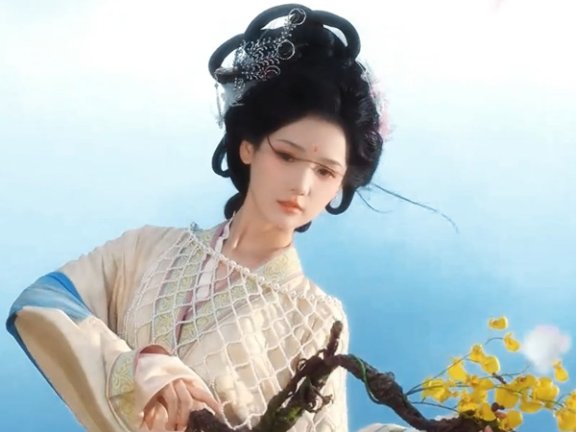-
How to Turn Your Love of Hanfu into a Career
Over the past few years, hanfu has transformed from a niche hobby into a growing market worth billions. The number of people who wear traditional looks not only at festivals but also in their everyday lives is growing all over the world. According to NewHanfu, by 2028, the Chinese market is expected to have grown from its current valuation of 13.7 billion yuan (about $1.9 billion) to 33.4 billion yuan. Inspiring stories from designers, stylists, photographers, and event planners prove that a love for hanfu can become more than just a hobby, but a full-time job. The only question is how to take the first step. Why hanfu became a global trend The Hanfu revival began in China in the early 2000s as part of a movement for cultural identity. Young people were looking for ways to express their connection with history, and traditional clothing became a vivid symbol of this. Online communities quickly united fans around the world: some shared patterns, others shared photos from festivals. Pop culture projects also played a role. TV series like “The Palace” or “The Legend of Hao Lan” brought back the fashion for complex costumes and accessories. Against the backdrop of globalization, viewers…- 0
- 0
- 60
-
Caoxian: A Small Town Weaving a Billion Yuan Hanfu Industry
Caoxian is located in the southwestern part of Shandong Province, at the junction of Shandong and Henan provinces. It has a registered population of about 1.69 million and is a major county for human resources in Shandong. Four years ago, a local internet celebrity humorously rapped in a short video, using the catchphrase '666' to turn this small town into the so - called 'center of the universe' comparable to Beijing, Shanghai, and Guangzhou. In the past two years, with the popularity of 'horse - face skirts' and 'New Year greeting costumes' across the country, Caoxian has been closely linked with the Hanfu industry, achieving long - lasting popularity and attracting much attention. It has successfully transformed from an 'internet meme' to an 'industry success story'. Horse Face Fkirt Now, in this largest Hanfu production base in the country, there are more than 2,750 Hanfu enterprises, about 15,000 online stores, and nearly 100,000 people engaged in the Hanfu industry. On June 18th, Yao Chixing, the person - in - charge of the Youai Cloud Warehouse Hanfu Base in Caoxian, was organizing Hanfu in the exhibition hall. Entering the Youai Cloud Warehouse Hanfu Base in Caoxian, the slogan 'Everyone should have…- 0
- 0
- 154
-
How Caoxian County Built a Hanfu Empire
In a whirl of silk and sweeping sleeves, the third Caoxian County Hanfu Cultural Festival (曹县汉服文化节) recently unveiled its 2025 spring-summer collection, dazzling audiences with runway shows that spotlighted 320 brands from 160 local companies. This spectacle wasn’t just eye candy—it cemented Caoxian’s reputation as China’s undisputed Hanfu capital. The county’s rise began in 2024 when its Horse-Face Skirts (马面裙) became a Lunar New Year sensation, propelling Caoxian to dominate 50% of China’s Hanfu market with ¥12 billion ($1.7 billion) in annual sales. By 2025, projections suggest a 15.8% quarterly growth spike. But how did this rural county transform fleeting hype into lasting influence? Government as Growth Catalyst “I finished all licensing paperwork in one day—unthinkable elsewhere!” exclaimed Mr. Li, a Hanfu manufacturer expanding his workshop. At Caoxian’s government service center, nine approval processes for Hanfu businesses were streamlined into a single “one-stop” portal, slashing processing time by 93% and paperwork by 44%. "Businesses drive this industry, but our role is to remove roadblocks," said Zhao Fulong, Caoxian’s Party Secretary. This efficiency-first ethos has fueled a manufacturing boom: today, one in two Hanfu garments nationwide originates from Caoxian factories. While viral TikTok moments grab headlines, Caoxian’s real edge lies underground—18,000…- 0
- 0
- 102
-
Hanfu Bloom Season: Behind Beijing’s Floral Fashion Frenzy
Spring in Beijing transforms into a living canvas of blossoms. From the mountain peach flowers at the Old Summer Palace to the cherry blossoms at Lotus Pond Park, the city’s parks burst into color. But it’s not just tourists flocking to these floral hotspots—Hanfu photographers and makeup artists are racing against time to capture fleeting beauty. "By late February, my entire bloom-season schedule was fully booked. Some clients reserved spots as early as last December," says Anna, a Hanfu stylist. Photographer Taozi, a rising star with 50k social media followers, shares similar pressures. "I’m juggling five clients a day. We live by the flowers’ schedule," she laughs. Her story mirrors the explosive growth of Hanfu culture: a decade-long hobby evolved into a thriving career after she quit her corporate job in 2021. Today, her bespoke photo sessions start at ¥1,000 ($140) and sell out months in advance. Capturing Fleeting Beauty Beijing’s bloom season is brief and unpredictable. A gust of wind can strip petals overnight, turning a perfect cherry blossom backdrop into bare branches. "Mountain peach blossoms are our ‘weather vane’—once they bloom, we calculate timelines for other flowers," Taozi explains. To stay ahead, she studies bloom patterns months in…- 0
- 0
- 120
-
The Hanfu Boom: A Guide to Leading Brands
Hanfu (汉服, traditional Chinese clothing) isn’t just a nostalgic trend—it’s a global movement. What began as a niche subculture in China has evolved into a thriving industry, with brands blending historical accuracy with modern wearability. Forget stiff costumes; today’s Hanfu ranges from silk-adorned ceremonial robes to minimalist office-friendly pieces. Here’s a breakdown of the brands driving this revival, their signature styles, and why they resonate with Gen Z shoppers from Los Angeles to Jakarta. 1. Minghuatang (明华堂) Founded in 2007, this Guangzhou-based label has become synonymous with meticulous craftsmanship and eye-watering price tags—think ¥10,000 ($1,400) for a single set, with wait times stretching up to a year. https://www.youtube.com/watch?v=guu1ad17AH8 The Founder’s Obsession Hong Kong-born Zhong Yi (钟毅), a fashion design graduate from Guangzhou Academy of Fine Arts, noticed something odd in the early 2000s: At formal events, Koreans wore hanbok, Japanese wore kimono, but Chinese attendees rarely wore Hanfu. He started designing his own pieces, wearing them daily to normalize the tradition. In 2007, he co-founded Minghuatang with a clear mission: to recreate historically accurate Ming Dynasty (1368–1644) attire with museum-level precision. What Justifies the Price? Minghuatang’s garments aren’t just costumes—they’re wearable history. Every stitch follows 15th-century texts and artifacts, from…- 1
- 1
- 682
-
2025 World Peony Hanfu Industry Forum in Heze
On April 9, 2025, the High-Quality Hanfu Industry Forum, part of the World Peony Congress in Heze, Shandong, convened government leaders, academic experts, and industry pioneers to strategize the integration of traditional Hanfu culture with modern innovation. Key attendees included Pan Lusheng (Vice Chairman of China Federation of Literary and Art Circles), Dong Zhanjun (President of Shandong University of Art and Design), and Li Chunying (Mayor of Heze). President Dong Zhanjun emphasized expanding Hanfu’s cross-industry cultural influence and pledged to leverage university resources for talent cultivation, design innovation, and industrial collaboration. The forum unveiled the “Traditional Attire Fashion Innovation” Knowledge Graph, a framework guiding historical and modern design integration. Mayor Li Chunying highlighted Heze’s success in building the “Cao County Hanfu” brand and announced the “Cao County Hanfu Global Promotion Plan”, appointing overseas ambassadors and partnering with cross-border e-commerce platforms. The Heze University Hanfu Volunteer Alliance was launched to engage students in cultural promotion, while partnerships with MCN agencies and cultural tourism sites aimed to boost immersive experiences like “Hanfu + Peony Tourism.” The event attracted over 20 universities, top Hanfu enterprises, and supply-chain stakeholders, marking a milestone in positioning Hanfu as a global cultural symbol rooted in tradition yet…- 0
- 0
- 104
-
China's Hanfu Industry Consumer Analysis
1. Public Awareness of Hanfu and Brand Recognition According to a research report by Jingzhi, public understanding of Hanfu varies significantly. Specifically, 45.9% of respondents reported a "good understanding" of Hanfu and could identify its basic styles; 43.1% had a "general familiarity"; while only 11.0% claimed limited or no knowledge. Geographically, residents of first-tier cities (e.g., Beijing, Shanghai, Guangzhou, Shenzhen), new first-tier cities, and second-tier cities demonstrated higher awareness, attributable to these regions’ strong cultural environments, rapid information dissemination, economic development, and greater demand for cultural consumption. Regarding brand recognition, despite rapid market growth in recent years, overall brand awareness remains relatively low. Apart from leading brands like Han Shang Hua Lian, Chong Hui Han Tang, and Shi San Yu, most Hanfu brands still struggle with visibility. This is largely due to the industry’s early-stage development, fragmented market structure, and the absence of dominant brands with broad influence. Additionally, limited marketing efforts—primarily relying on social media and word-of-mouth—restrict brand exposure. 2. Channels of Exposure and Hanfu Usage Scenarios Key channels for learning about Hanfu include historical dramas (59.3%), social media (54.7%), Hanfu cultural clubs (49.1%), historical literature (40.7%), and museum exhibitions (38.8%). Historical dramas visually showcase Hanfu’s elegance through intricate…- 0
- 0
- 247
❯
Profile
Check-in
Message
Message
Search
Contact Us
Scan to open current page
Top
Checking in, please wait
Click for today's check-in bonus!
You have earned {{mission.data.mission.credit}} points today!
My Coupons
-
$CouponsLimitation of use:Expired and UnavailableLimitation of use:
before
Limitation of use:Permanently ValidCoupon ID:×Available for the following products: Available for the following products categories: Unrestricted use:For all products
No available coupons
Daily tasks completed:
